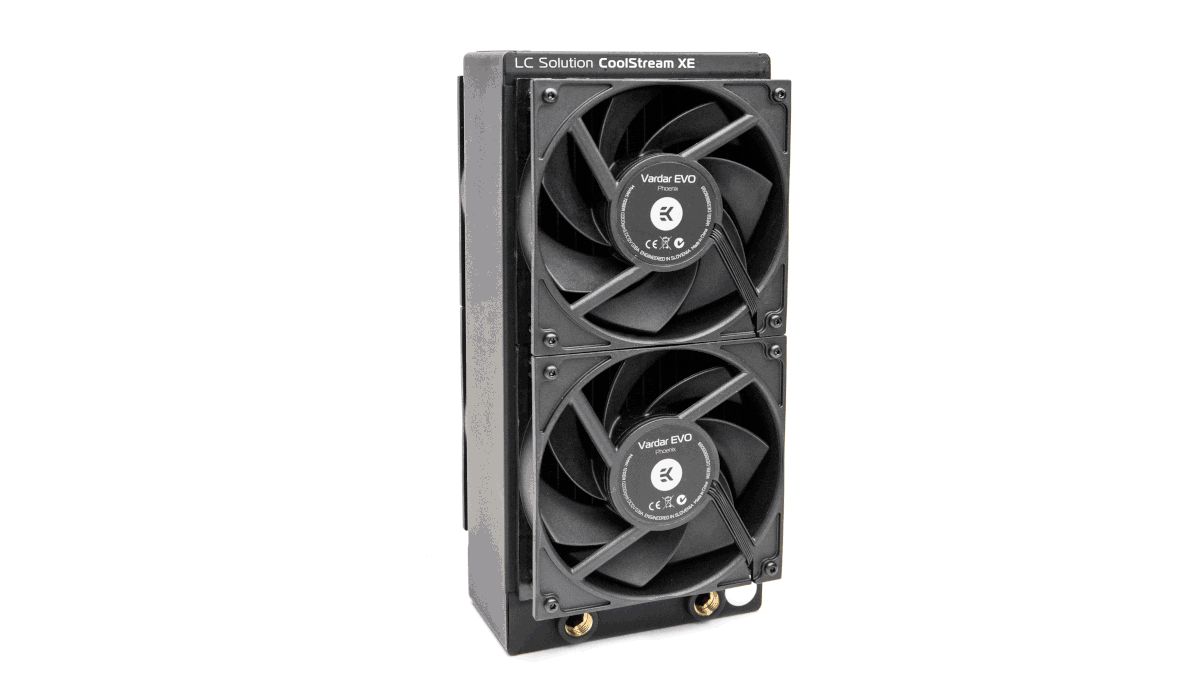Push, Pull or Push-Pull Fan Setups
Feb 10, 2019 | 4-Min. Read
Erik Nastovski
We continue our guides that show differences in radiator performance depending on the speed of the fans, thickness, and FPI of radiators etc. Today we address the subject of push, pull, push-pull fan setups and how they affect different radiators and performance. We hope to help you decide what kind of setup is right for you and to show the benefits of each.
We have covered the basics about radiators in the Part 1 blog, and in Part 2 we even showed some charts. Part 2 clarified things about radiator performance, how radiator performance is expressed and how do we read radiator performance charts. And in the Part 3 blog, we’ve shown differences between small thick radiators vs large slim ones.

What is push fan configuration?
In this configuration, the fans are mounted before the radiator and they push air through it.
What is pull fan configuration?
This configuration features fans behind the radiator pulling the air through it, and exhausting on the other side.
What is push-pull?
It is a setup where the radiator is sandwiched between 2 sets of fans, which blow in the same direction.

What do you gain from push-pull configuration and why is it beneficial?
Radiator thickness and number of fins per inch (FPI) increase heat dissipation surface, but also make it harder for the fan to blow air through it. So the more FPI and the thicker the radiator is, the higher the heat dissipation increase will be by having fans in push-pull configurations.






Now you notice that the slim, SE version of our radiator which is only 28mm thick, has more FPI, but let’s see if the 60mm thick XE will benefit from push-pull more than the more densely packed SE.


For our testing we’ve used a GPU and a Quad core CPU to generate heat. We’ve set our EK Vardar fans to 800 and 1600RPM. We’ve tested push, pull and push-pull configurations on 240mm variants of our XE (60mm thick, 16 FPI) and SE radiators (28mm thick, 22FPI).


Lets start with the obvious, increasing fan RPM from 800 to 1600 nets greater gains than having push-pull set to 800 RPM. But at the cost of significantly more noise. Other thing that we notice is when the fans are running at 1600 RPM, we get far less gain from running push-pull configuration as the single set of fans are managing to dissipate a lot more heat from the radiator, so the closer the water temperature and radiator temperature to the ambient, the less improvement we’ll see from increasing the fan speed or doing a push-pull config.
So let’s say we want a cool, yet whisper quiet system, how do we manage it without adding more radiators?
Let us revisit the 800 RPM chart. EKWB XE radiator, even though significantly thicker, on low RPM is very close to our slim SE radiator in performance due to the fans having more trouble getting air through the 60mm thick radiator. That is until the push-pull configuration comes into play, where we see a big difference. Thicker XE radiator manages to pull significantly ahead, almost matching SE radiator in push configuration on 1600 RPM. There we see the strengths of push-pull configurations – you can get a quieter system by running fans on significantly less RPM without sacrificing much performance.

Or maybe you just want that extra bit of performance to cool an overclocked high end rig with SLI/CF and a HEDT CPU? Push-pull fan configuration will allow you to get even better thermals and make sure you squeeze some more MHz out of your hardware. Another thing we’d like to note, not related to the push-pull configurations is that Vardar fans do slightly better in pull configurations. With this we conclude the push-pull testing, and we hope that we’ve helped you choose what kind of fan configuration is right for you.